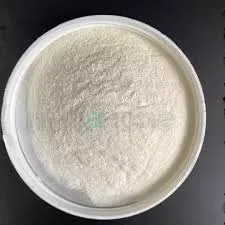
دېكابىر . 21, 2024 20:49 Back to list
hydroxyéthyl cellulose
Hydroxyethyl Cellulose An Overview
Hydroxyethyl cellulose (HEC) is a non-ionic, water-soluble polymer derived from cellulose, a naturally occurring biopolymer found in the cell walls of plants. Its unique properties and versatility have made HEC a valuable ingredient in numerous industrial and consumer applications, ranging from cosmetics to pharmaceuticals, food products, and construction materials.
Chemical Structure and Properties
HEC is produced through the alkali treatment of cellulose, followed by the reaction with ethylene oxide. The result is a modified cellulose polymer with hydroxyethyl groups attached to the glucose units of the cellulose chain. This modification increases the solubility of cellulose in water, giving HEC its unique characteristics.
The primary properties of HEC include high viscosity, thermal stability, and excellent film-forming capabilities. It forms clear and stable solutions in water, making it an ideal thickening agent or stabilizer. Additionally, HEC is pH-stable and can maintain its viscosity across a broad range of temperatures and pH levels, which is particularly advantageous in various formulations.
Applications in Various Industries
1. Pharmaceuticals In the pharmaceutical industry, HEC serves multiple purposes. It is commonly used as a thickening agent in liquid formulations, ensuring uniform consistency and enhancing the stability of suspensions. Due to its ability to form gels, HEC is also employed in topical medications and drug delivery systems, where it helps control the release of active ingredients.
2. Cosmetics and Personal Care HEC is widely utilized in the formulation of various cosmetics and personal care products, such as lotions, creams, shampoos, and conditioners. Its thickening properties contribute to the texture and feel of these products, while its ability to retain moisture helps improve skin hydration. Additionally, HEC is often used in hair styling products for its film-forming capabilities, providing hold and manageability.
hydroxyéthyl cellulose

3. Food Industry In the food sector, HEC acts as a stabilizer and thickener in sauces, dressings, and dairy products. It helps maintain the texture and consistency of food items, improving their overall quality. Furthermore, HEC can enhance the mouthfeel of low-fat products, making them more appealing to consumers.
4. Construction and Building Materials The construction industry has also embraced HEC as a key additive in various materials such as cement-based products, adhesives, and paints. Its water-retention properties ensure better workability and adhesion, while improving the overall performance of construction materials.
5. Other Applications Beyond its primary uses, HEC finds applications in textiles, oil drilling, and even as an ingredient in certain agricultural products. Its versatility makes it a crucial component in formulations that demand stability, viscosity, and water retention.
Environmental Considerations
As a derivative of cellulose, HEC is regarded as environmentally friendly and biodegradable. Its renewable source, derived from plant materials, highlights its potential for sustainable applications. However, the production processes and chemical modifications used to create HEC must be managed responsibly to minimize environmental impact.
Conclusion
Hydroxyethyl cellulose has emerged as a versatile and crucial ingredient across various industries due to its unique properties and functionality. From enhancing the consistency and stability of personal care products to improving the quality of food and construction materials, HEC plays an integral role in modern formulations. As industries move towards sustainable practices, the utilization of biodegradable and renewable materials like HEC may continue to grow, further solidifying its importance in a wide range of applications. With ongoing research and development, the future of hydroxyethyl cellulose looks promising, paving the way for innovative uses and enhanced formulations that cater to the evolving needs of consumers and industries alike.
-
Versatile Hpmc Uses in Different Industries
NewsJun.19,2025
-
Redispersible Powder's Role in Enhancing Durability of Construction Products
NewsJun.19,2025
-
Hydroxyethyl Cellulose Applications Driving Green Industrial Processes
NewsJun.19,2025
-
Exploring Different Redispersible Polymer Powder
NewsJun.19,2025
-
Choosing the Right Mortar Bonding Agent
NewsJun.19,2025
-
Applications and Significance of China Hpmc in Modern Industries
NewsJun.19,2025







